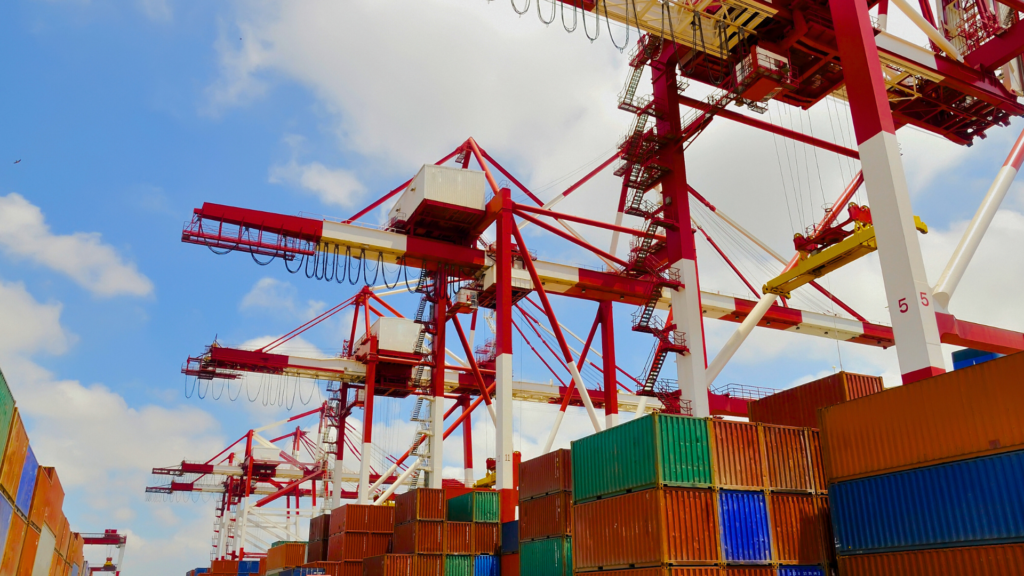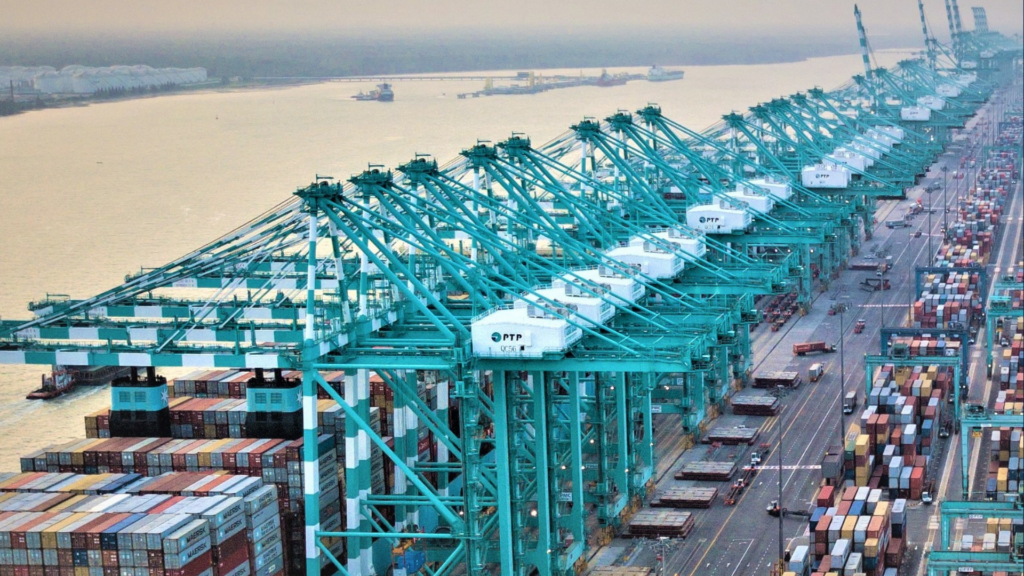Container terminals are under increasing pressure to adapt to growing cargo volumes, larger vessels, and rising operational demands, challenging the effectiveness of traditional terminal management methods. To address these challenges, RTG Optimization, a cutting-edge suite of applications developed by Navis, powered by Kaleris, is transforming Rubber Tyred Gantry (RTG) crane management and boosting terminal efficiency.
The Modern Challenges of Container Terminals
Container terminals today operate in a high-pressure environment with several complex challenges:
- Growing Cargo Volumes: Terminals must handle more containers within the same physical space and time constraints, requiring more efficient processes to maintain throughput.
- Larger Vessels: The increasing size of container ships adds complexity to berth allocation, yard management, and equipment operations.
- Terminal Congestion: High traffic levels disrupt operational flow, reducing efficiency and increasing delays.
- Rising Labor Costs: Terminals must balance improving efficiency with managing higher operational expenses.
- Automation Integration: While automation offers opportunities, it requires significant investment and seamless integration with existing systems.

What is RTG Optimization?
RTG Optimization is an advanced suite of applications designed to revolutionize RTG crane management. Developed in collaboration with leading global terminals, it integrates real-time visualization, predictive analytics, and advanced scheduling to streamline operations.
Key Features of RTG Optimization:
RTG Sequencer:
- Analyzes and sequences RTG operations to optimize scheduling.
- Reduces idle time and increases operational efficiency by minimizing unproductive moves.
Yard Crane Balancer:
- Dynamically balances workloads across RTG lanes based on real-time data.
- Reduces congestion and enhances yard utilization by recommending proactive lane changes.
Control Room:
- Provides real-time visualization of terminal operations, including yard occupancy, equipment activity, and exception handling.
- Features priority-based alarms and configurable filters for streamlined decision-making.
Vehicle Mounted Terminal (VMT):
- A mobile application that allows RTG operators to view jobs and inventory in real-time from the crane cabin.
- Reduces radio traffic and enhances situational awareness, improving productivity by up to 50%.
Predictive Housekeeping:
- Uses idle-time data to optimize container stacking and prepare for future vessel loads and gate deliveries.
- Minimizes reshuffling and ensures efficient yard storage management.
World Impact: Port of Tanjung Pelepas (PTP)

The transformative power of RTG Optimization is in action at the Port of Tanjung Pelepas (PTP), one of the world’s largest container terminals, which handles an annual throughput of 12.5 million TEUs with 14 berths, 66 Ship-to-Shore (STS) cranes, and 172 RTGs. Facing significant operational challenges, PTP implemented the RTG Optimization suite to enhance productivity and manage its extensive fleet effectively.
Deployment and Results:
- Improved Scheduling Efficiency: RTG Optimization improved scheduling efficiency by 6%, significantly reducing idle time and boosting productivity.
- Enhanced Operational Flow: The suite’s real-time data capabilities streamlined operations, ensuring smoother workflows and reduced congestion.
The success of RTG Optimization at PTP demonstrates its effectiveness in high-demand environments, setting the stage for broader adoption across the industry.
Preparing for Future Automation
RTG Optimization not only addresses current operational challenges but also lays the groundwork for future advancements in terminal automation. By enhancing manual operations today, it positions terminals to transition smoothly toward automated RTGs and remote-control operations.
Future-Ready Features:
- Integration with Automated Guided Vehicles (AGVs): RTG Optimization supports the seamless integration of AGVs and automated horizontal transport systems, further enhancing yard efficiency.
- AI-Driven Predictive Analytics: Advanced analytics capabilities enable smarter decision-making and operational planning.
- Remote Control Capabilities: The suite prepares terminals for the next generation of automation, including remote-controlled RTGs.
Why RTG Optimization Matters
RTG Optimization provides container terminals with the tools needed to thrive in a competitive and demanding global market. By adopting this advanced suite, terminals can:
- Increase Efficiency: Handle growing cargo volumes with agility and precision.
- Make Data-Driven Decisions: Leverage real-time insights for smarter operations.
- Prepare for Automation: Build a foundation for future technological advancements.
- Maintain a Competitive Edge: Stay ahead in an industry where operational excellence is critical.
Transforming Terminal Operations
The logistics industry is at a crossroads, and container terminals must adapt to meet the demands of modern operations. RTG Optimization is more than just a solution—it’s a transformative approach to terminal management.
As demonstrated by the success at PTP, RTG Optimization delivers substantial improvements in efficiency, productivity, and operational flow. Terminals that embrace these innovative technologies will be well-positioned to lead the future of container handling.
Take the Next Step
Ready to transform your terminal operations with RTG Optimization? Contact our team of experts today to learn how this advanced suite can drive significant improvements in your RTG management and prepare your terminal for the future of container handling.
About Kaleris
Kaleris is a leading provider of cloud-based supply chain execution and visibility technology solutions. Many of the world’s largest brands rely on Kaleris to provide mission-critical technology for yard management, transportation management, maintenance and repair operations, terminal operating systems, and ocean carrier and vessel solutions. By consolidating supply chain execution software assets across major nodes and modes, we address the dark spots and data gaps that cause friction and inefficiency in the global supply chain.